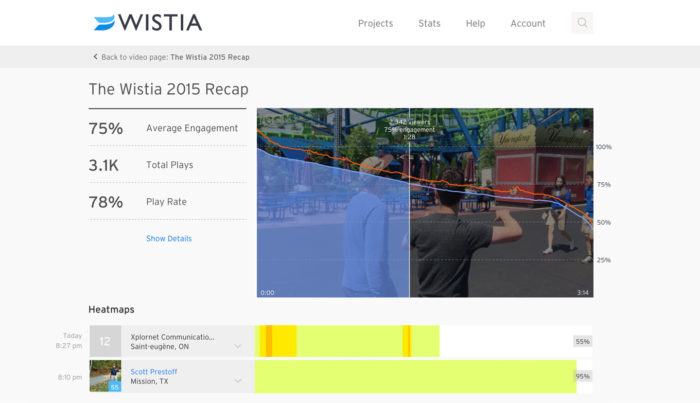Open edX is a massive open online course (MOOC) platform. Video content is a key part of courses authored and delivered in edX. Content is added to edX courses through components called XBlocks. EdX includes a handful of default XBlocks, including video, text, assessment problems and discussions. Third party developers have created an extensive library of alternative video XBlock that help extend functionality of the platform.
Problems with the existing video XBlock provided by Open edX
The default video XBlock, developed and maintained by the edX organization, consists of a robust video player that accepts video content from YouTube or an MP4 with a hard-coded URL.
The player includes useful features, such as the ability to speed up or slow down the playback, and it includes a well-designed capability to display the video transcript alongside the display.
But there are some fundamental problems with this player which make it unsuitable for many use cases, especially in the corporate learning environment, where video content is not suitable for publishing to Youtube, and serving videos from S3 is a suboptimal solution.
Youtube doesn’t protect the video IP
However, many organizations using edX are uncomfortable with the YouTube orientation of the default video XBlock. Even though the actual video URL is obscured, users can click the watermark on the video to view it on YouTube and reveal the URL. This approach is obviously not preferred by those who want to protect their video IP.
Amazon S3 doesn’t provide adaptive bitrate capabilities
The alternative, a hard-coded MP4 URL from sites such as Amazon S3 is less than ideal because there is no optimization of video size and quality based on capabilities of the client device.
Limited video analytics
Furthermore, we have customers who want much richer reporting on the use of and engagement with videos in edX, including which videos were accessed, and how much was actually watched.
The case for a Wistia XBlock
We think that all of these problems can be solved by creating an XBlock for the Wistia video platform, and that there is a natural fit here with the capabilities of the Wistia platform:
- Wistia has similar subtitle capabilities of the native edX video player, including support for multiple languages.
- Wistia has very rich analytics about how learners are engaging with the videos
- Wistia has the capability to speed up/slow down the video
- Wistia can even provide the capability (using the Wistia API) to upload video files directly in the Open edX Studio interface and have the videos pushed to Wistia in the background.
The Multi-stakeholder Sponsorship Model
We’ve been discussing development of a Wistia-based XBlock with several customers to see whether we can agree on communal funding for the effort.
Costs and timeline
We think this would generally be a one-month $10-$15K development effort, with the resulting code would be made available to the Open Source community on Github.
Once completed, we expect tremendous demand for the XBlock because there is no good alternative to YouTube currently on Open edX. The demand will certainly drive further interest in Wistia as a first-rate alternative to YouTube for the Open edX authoring community.
Get Involved
If you’re interested in learning more about these efforts, or would like to be a sponsor, please contact us, and we’ll keep you updated on the progress.
If you’ll be at the Open edX conference this week at Stanford, we will be hosting a Birds of a Feather session to discuss alternative video players for Open edX, including Wistia. Come and share your thoughts! 12:55pm tuesday in room 292
References
- Wistia vs Youtube : What’s the difference?
- Plupload – open source tool to handle uploads of large files (Filestack is another one)




